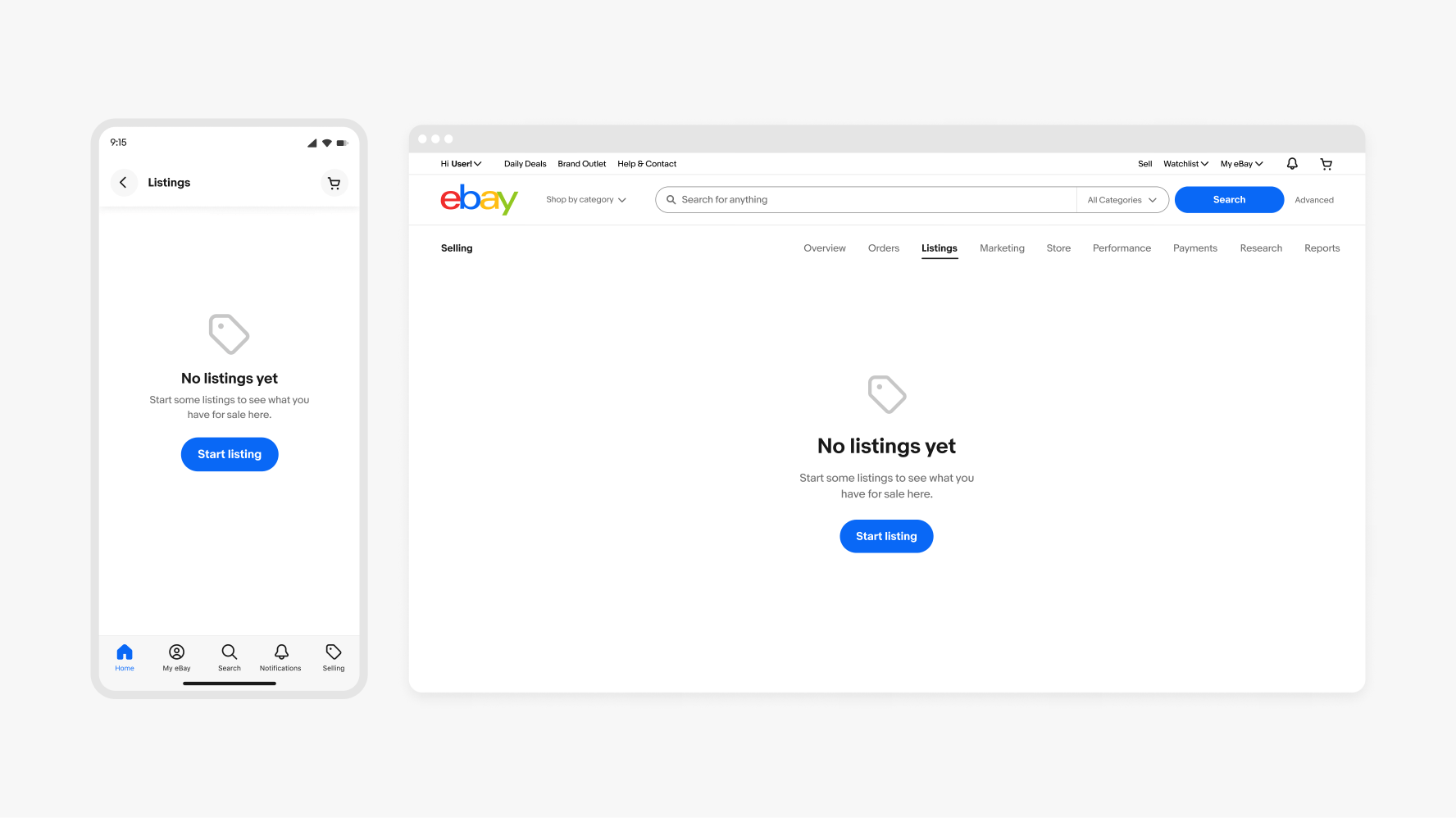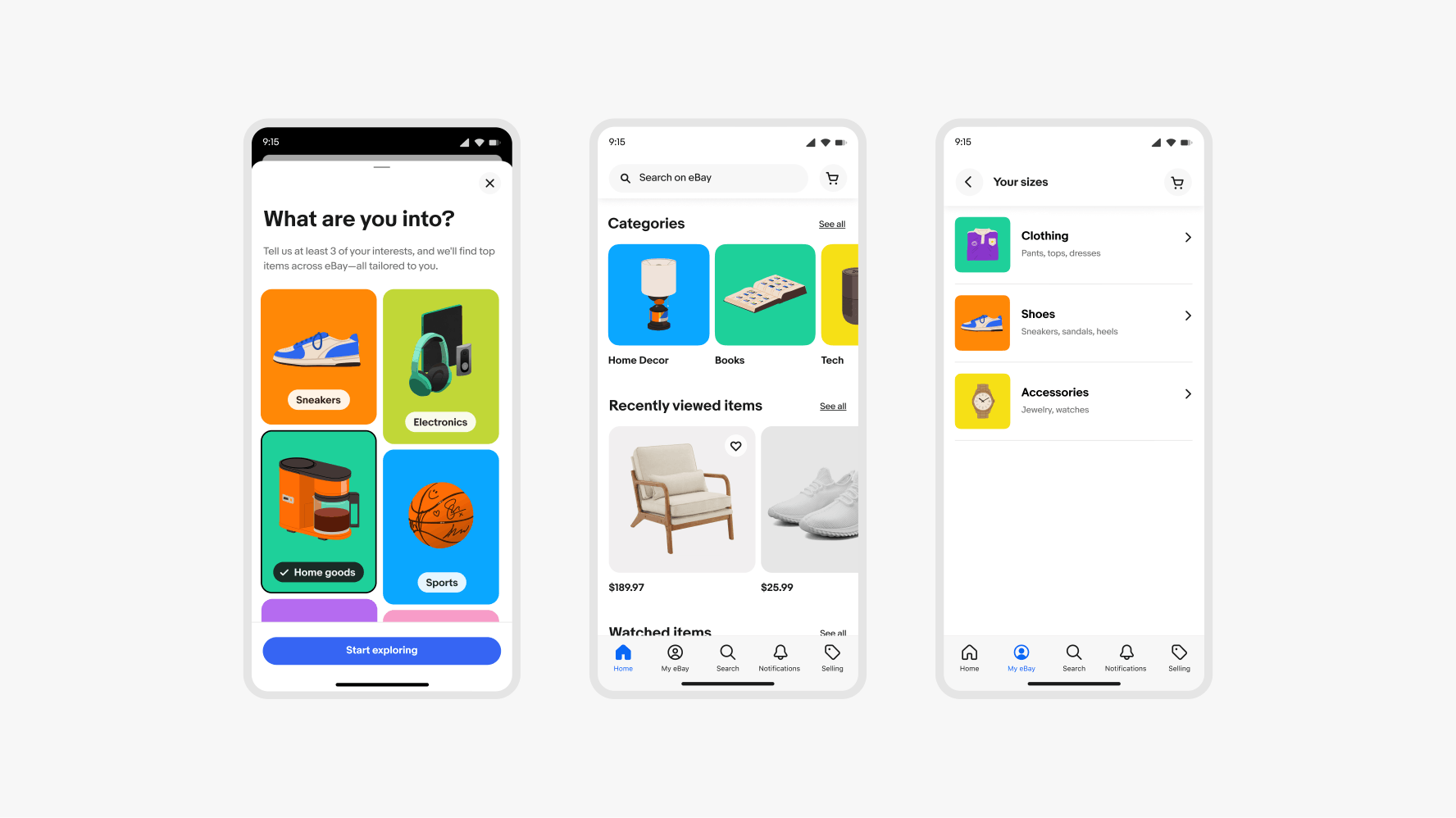Using illustration
We use illustrations to enhance our storytelling and create a bridge between our product language and lifestyle-focused imagery.
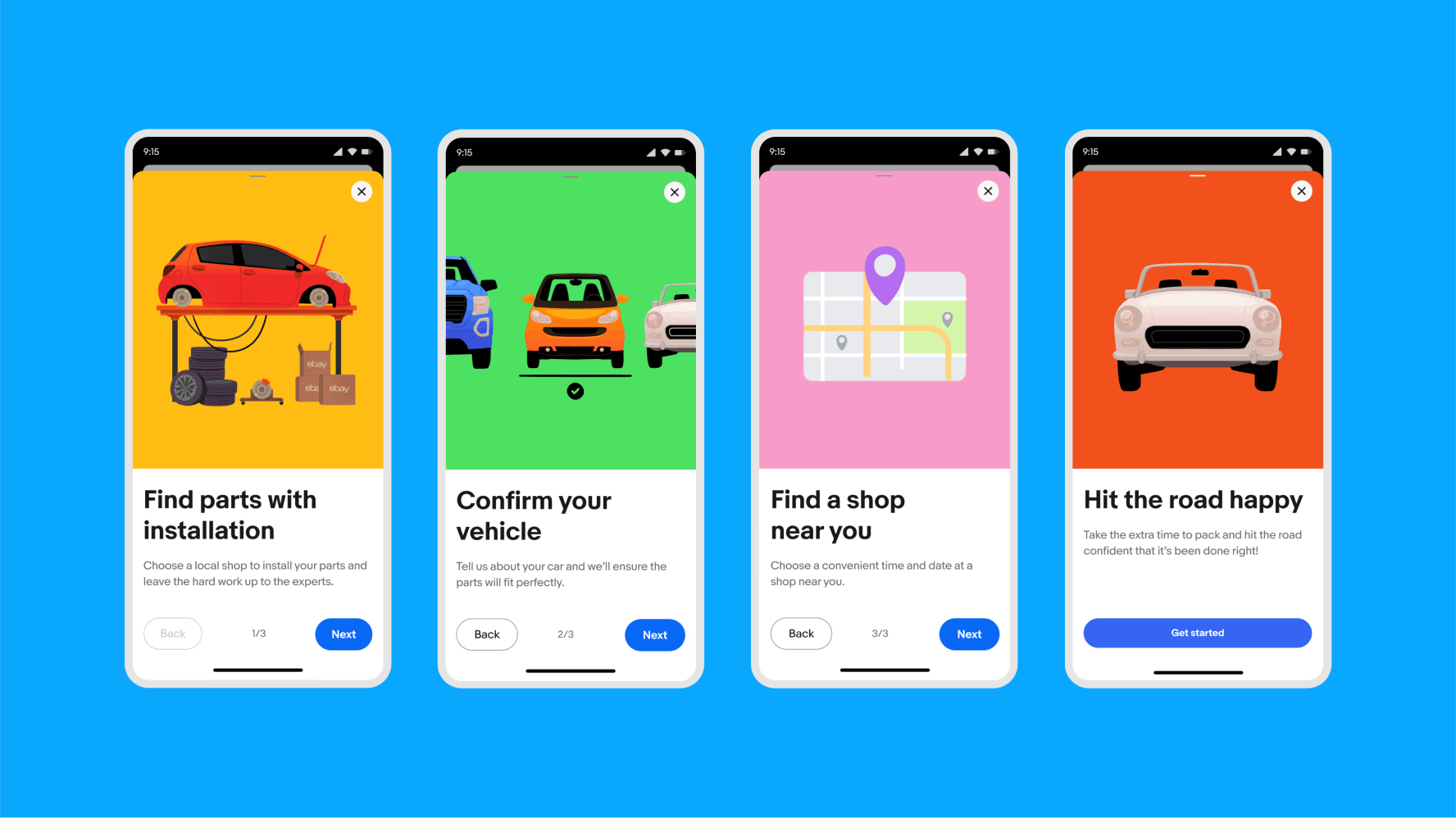
Illustration works well in representing broad categories, abstract ideas, or complex processes that may be challenging to convey through photography or iconography alone. Illustration can also add a touch of whimsy and color to capture attention and evoke emotion. It's most effective when balancing realism and creative expression and most often used for education, celebration, null states, and categories. Use illustrations sparingly in the product experience to avoid dilution and overshadowing of content. All illustrations must undergo mandatory review by the OX team during office hours to ensure optimal use.
Onboarding
Welcome users and introduce them to new features and concepts.
Celebration
Congratulate users on their wins and evoke positive emotions along their journey.
Null states
Indicate empty states and evoke a sense of delight during system errors.
Categories
To visually represent areas of our product that can be navigated or selected.
Illustration works well in representing broad categories, abstract ideas, or complex processes that may be challenging to convey through photography or iconography alone. Illustration can also add a touch of whimsy and color to capture attention and evoke emotion. It's most effective when balancing realism and creative expression and most often used for education, celebration, null states, and categories.
In-page education
Feature introduction cards introduce users to new features or programs, offering a way to learn more or try them out. They always use a neutral background and blue button to make it clear the message is from eBay.
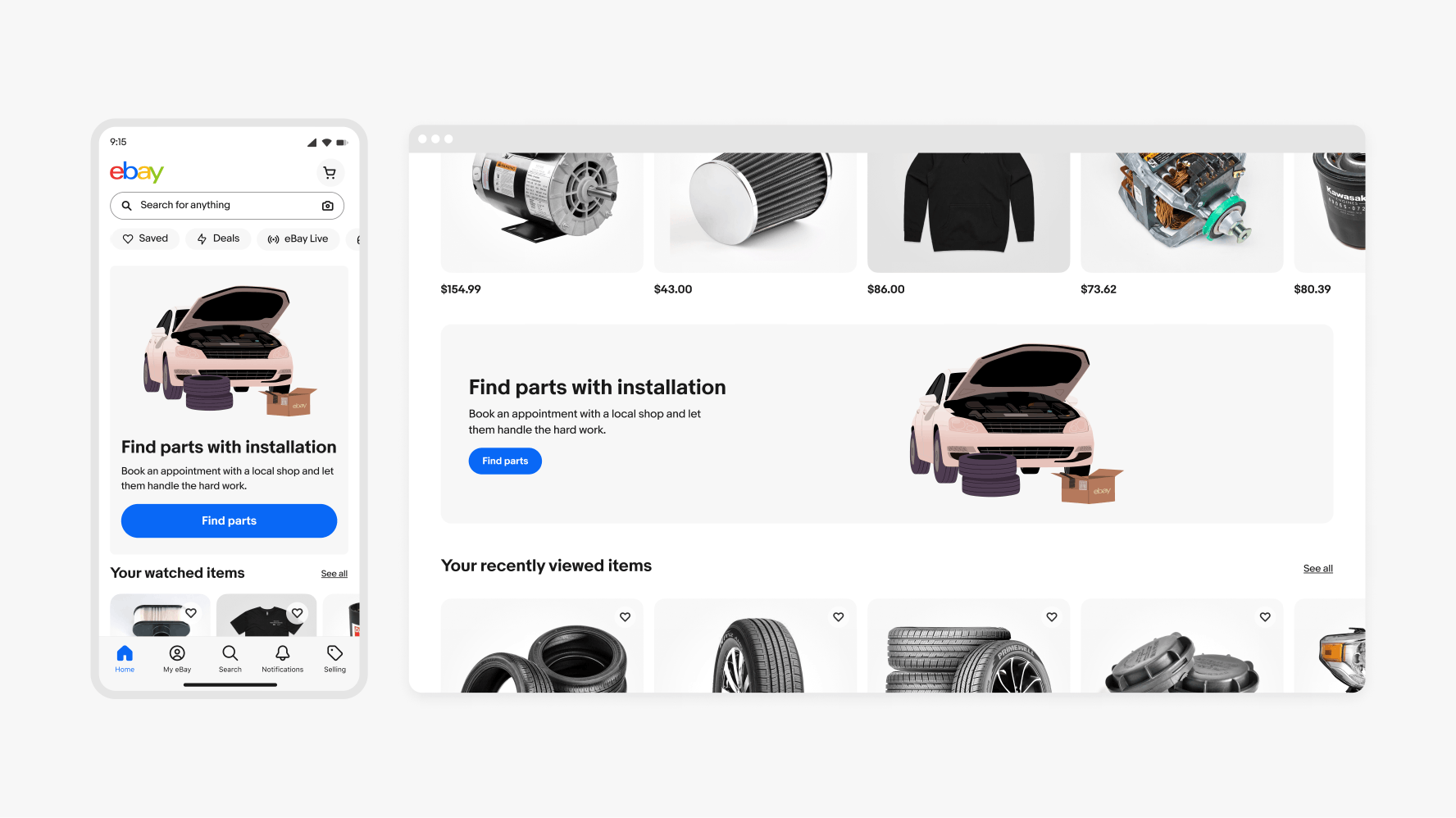
Modal onboarding
Modals are used for introducing and educating our customers about new products and features. They can accommodate an image and can use neutral or colored backgrounds.
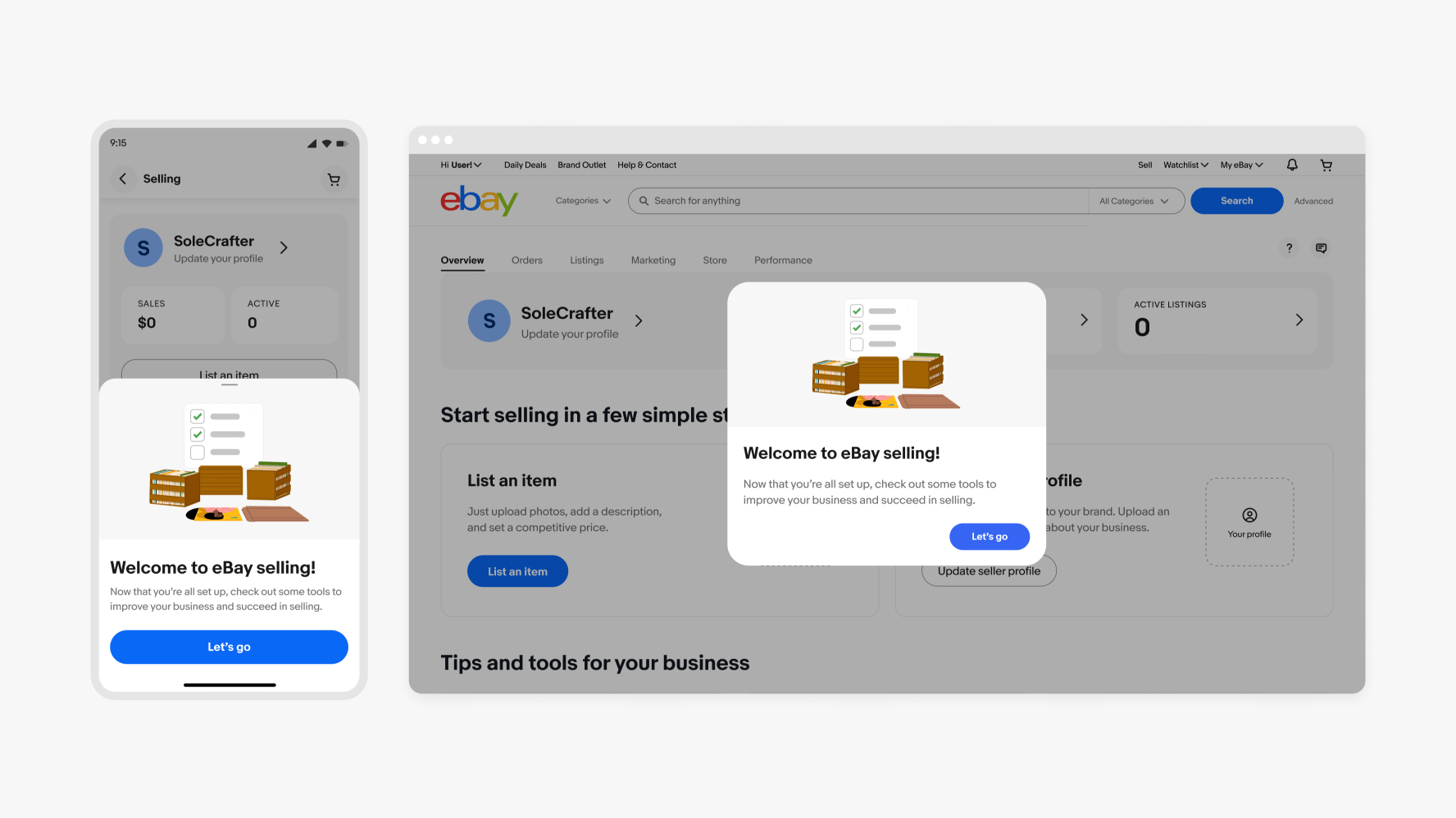
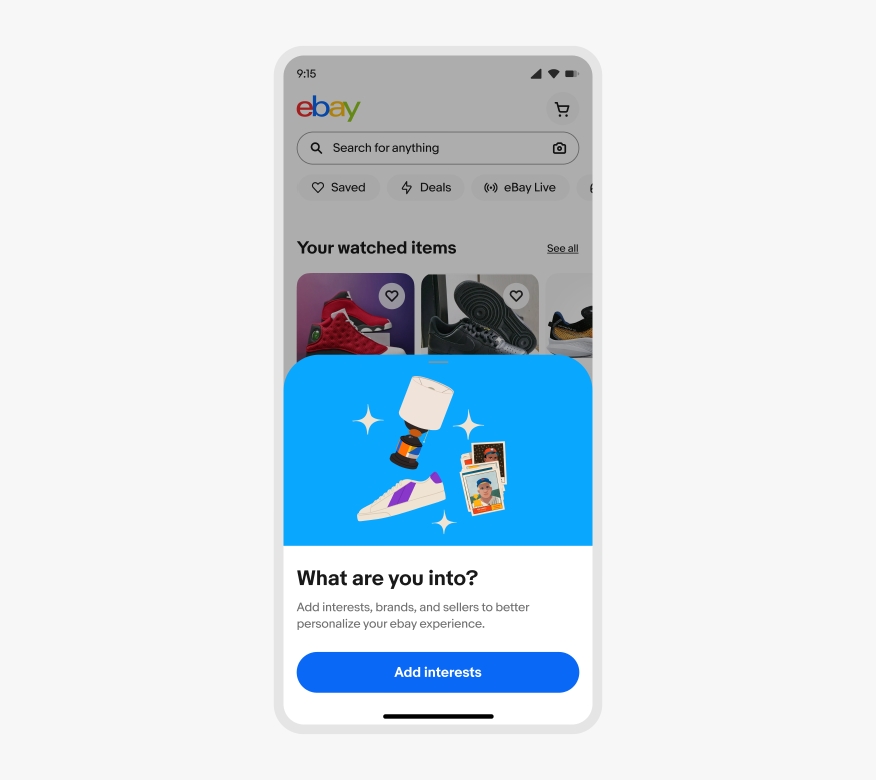
Half sheet
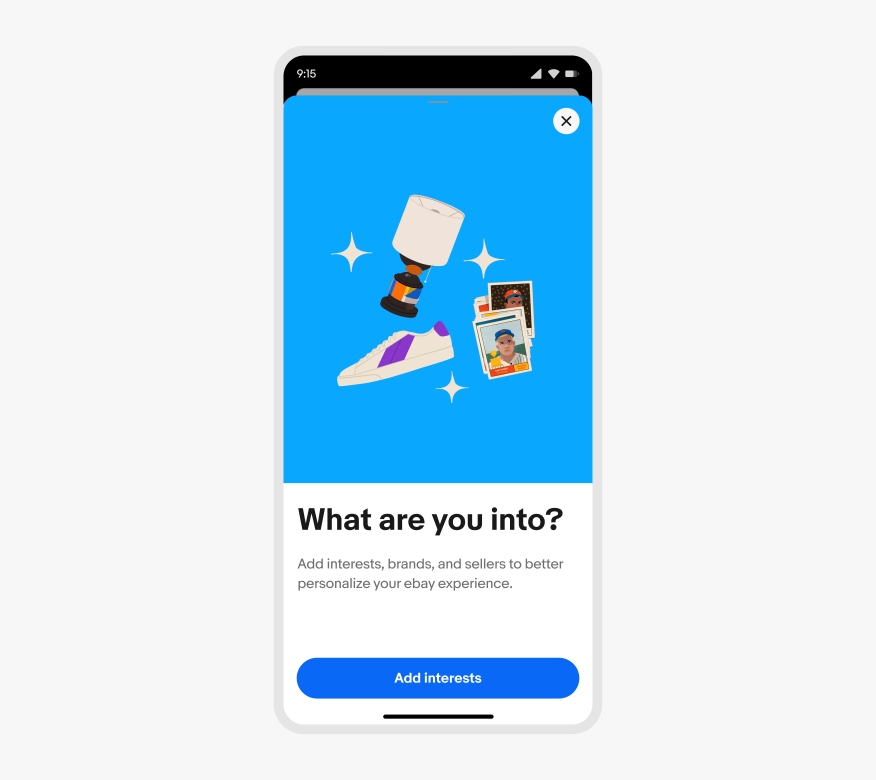
Full sheet
Multi-step modal onboarding
Multi-step modals are used for education and onboarding that need more than 1 step to explain. This may include explaining specific features or steps in a complex process or gathering multiple types of information from the user. Multi-step modals also accommodate an image and can use neutral or colored backgrounds. To ensure legible text and not-too-jarring transitions between steps, full-color sheets aren't available for multi-step modals.
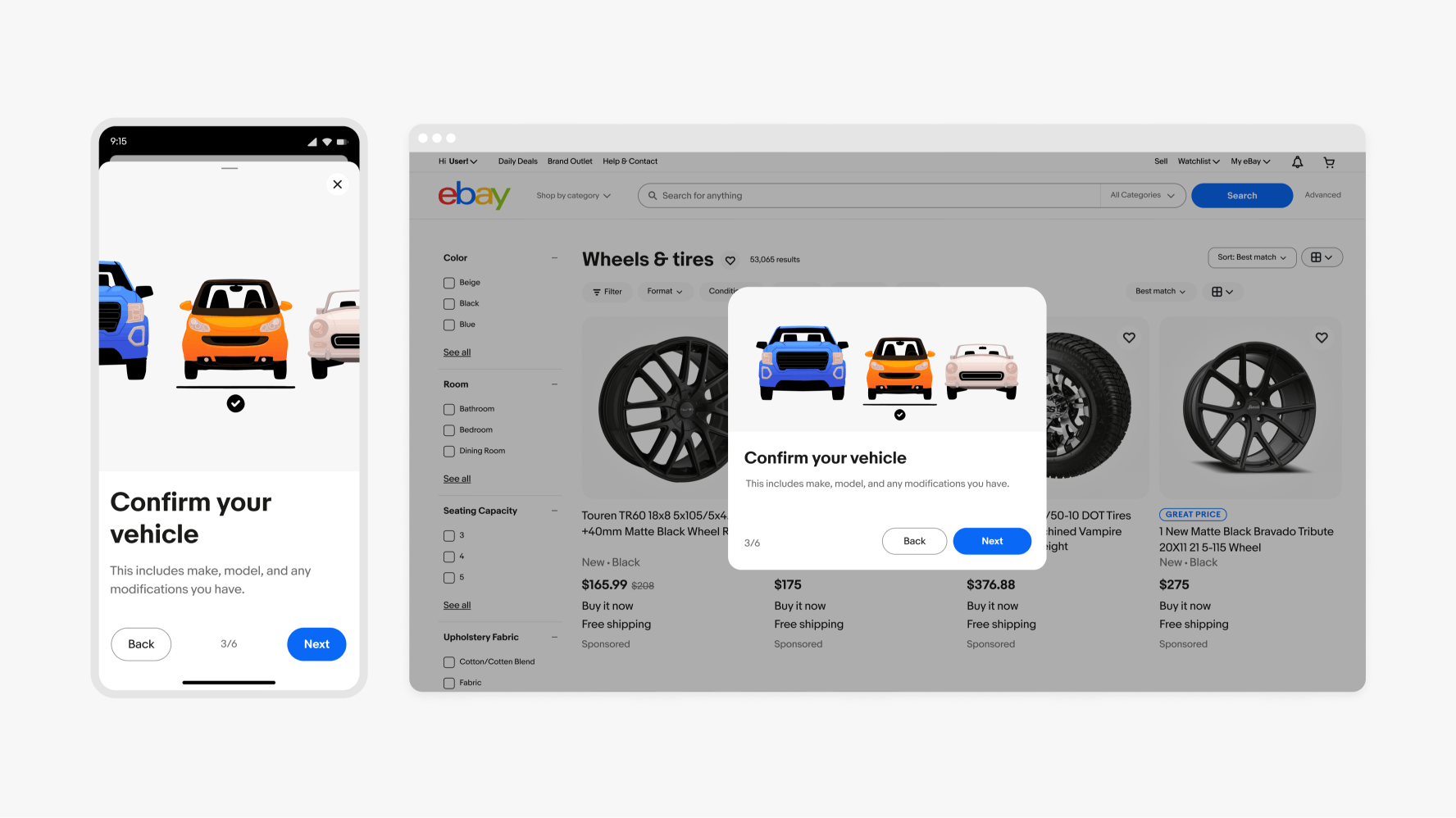

Half sheet
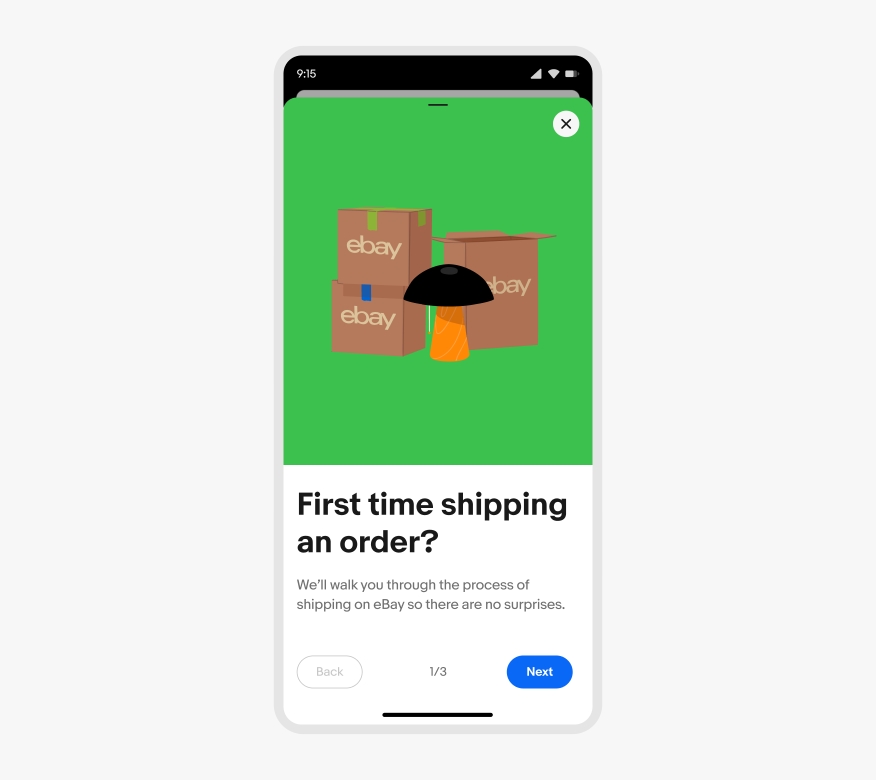
Full sheet
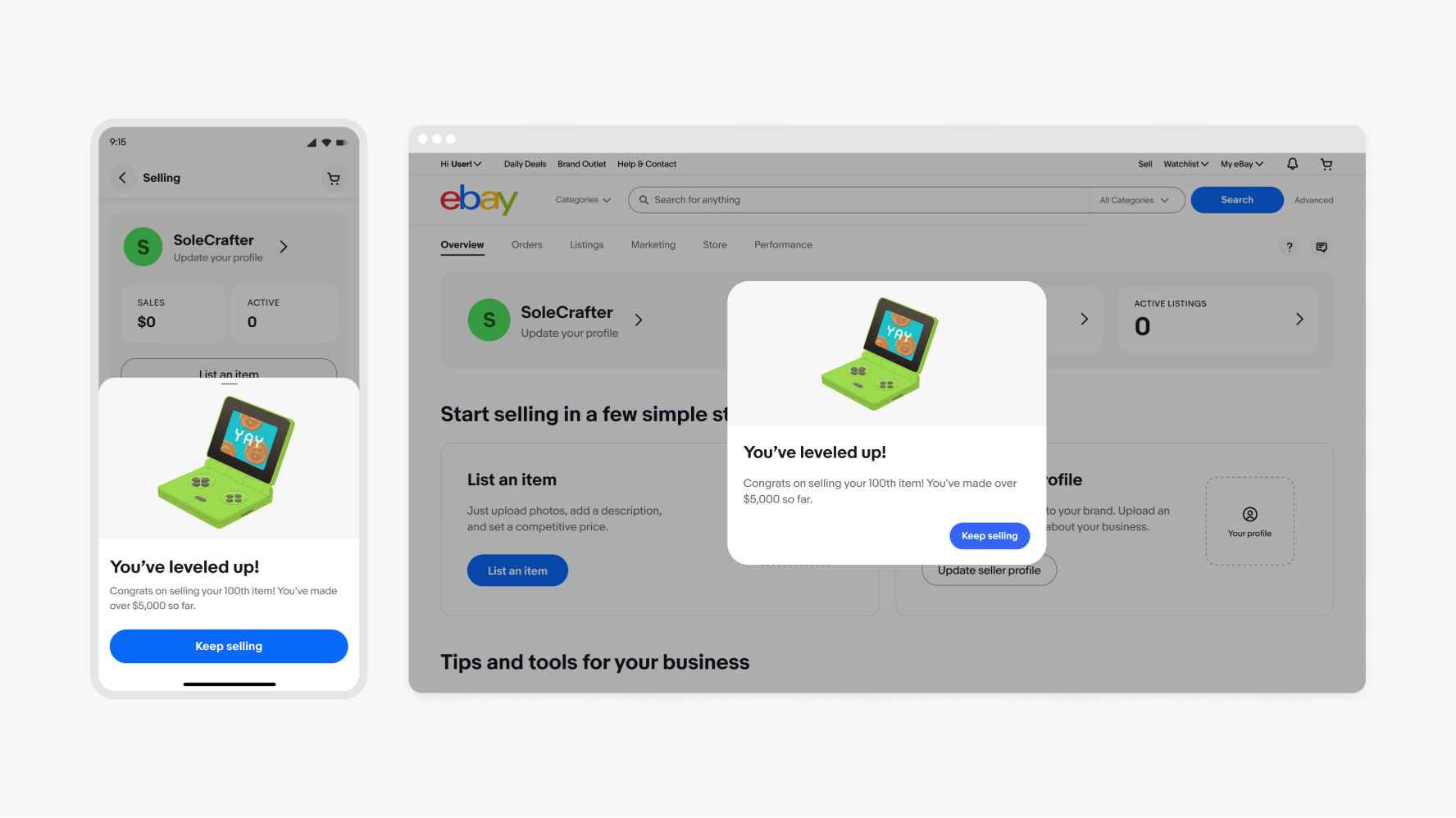

Half sheet
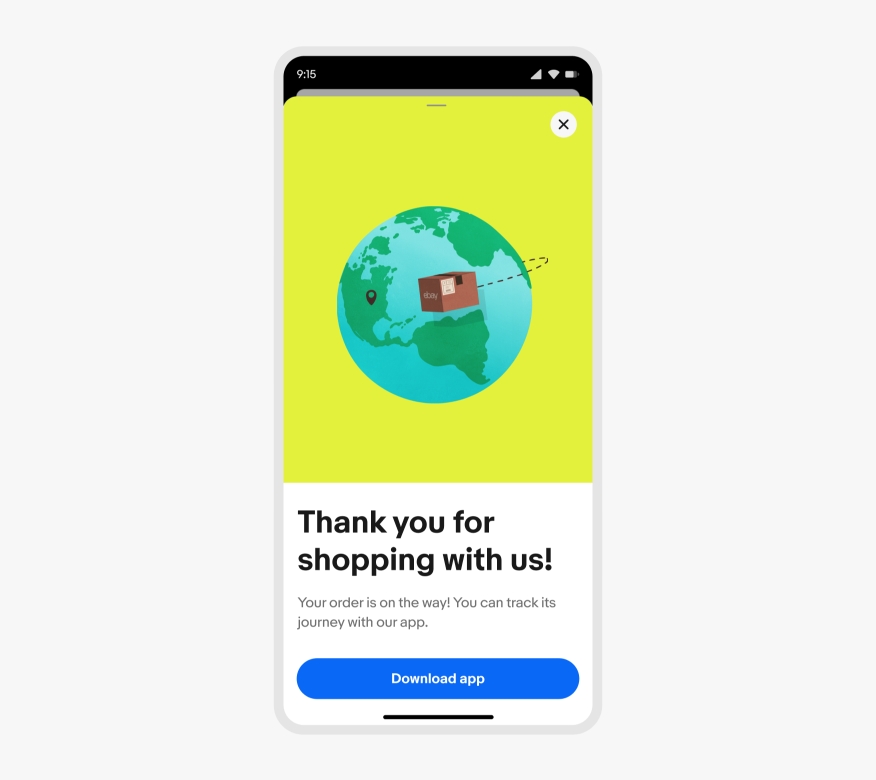
Full sheet
Illustrations can add inspiration to empty product areas or evoke a more positive reaction when something goes wrong. Avoid leaving users with a dead end by including a call-to-action. For example, refreshing the page if there was an error or adding favorites to a collection if they haven't yet.
Empty states
We use empty states when users encounter product areas that don’t have any data yet. Empty-state illustrations should represent what would be there, be specific to the area they are representing, and encourage users to take relevant action.
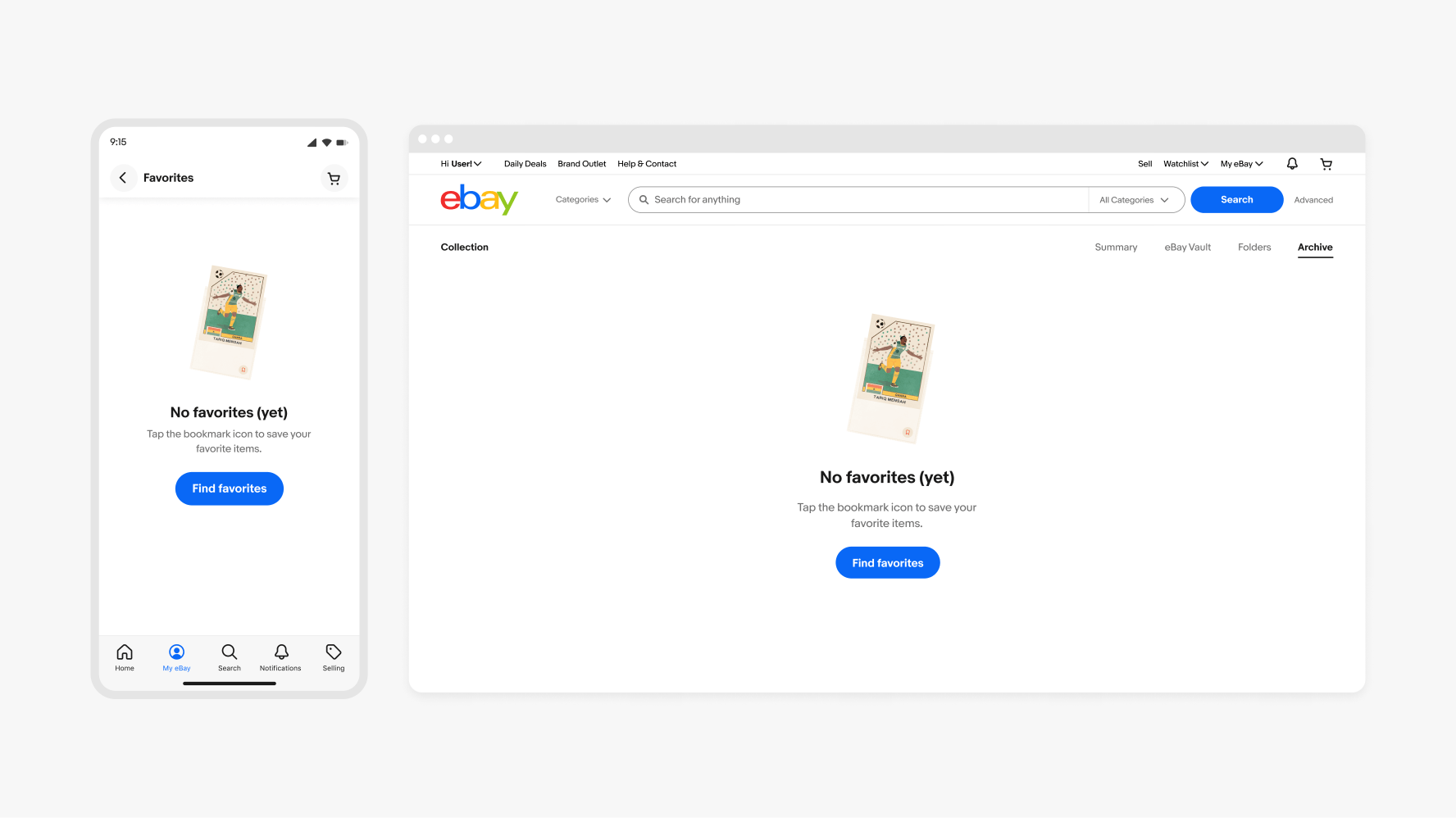
System errors
System errors like connectivity failure can happen unexpectedly and be frustrating. In this situation, using an illustration adds a touch of humor to help ease the frustration. All system errors use this static illustration and it shouldn’t be used anywhere else.
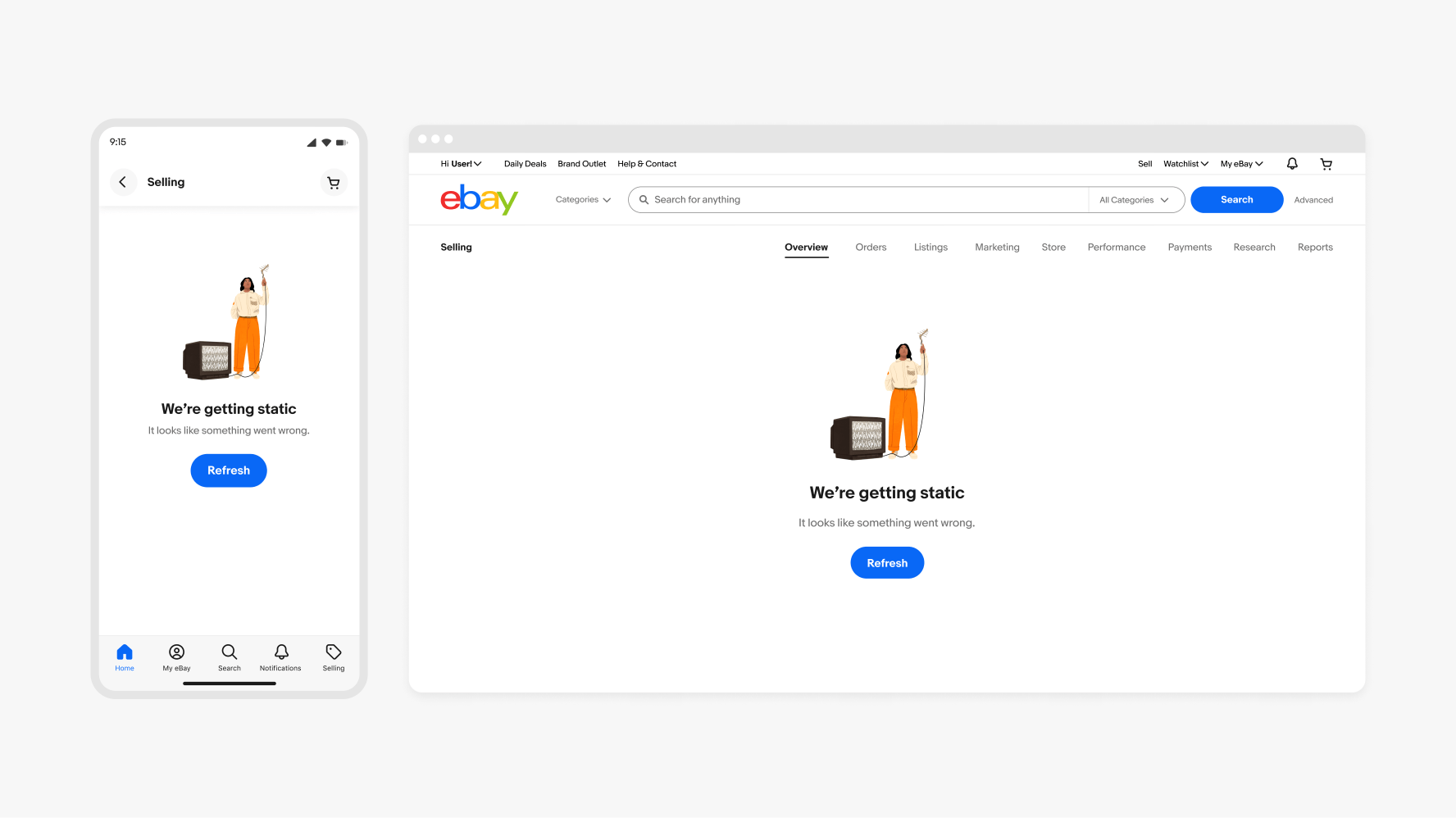
404 errors
404 errors are unfortunate but do happen infrequently. Using an illustration adds a touch relatability and helps our customers feel seen. All 404 errors use this static illustration and it shouldn’t be used anywhere else.
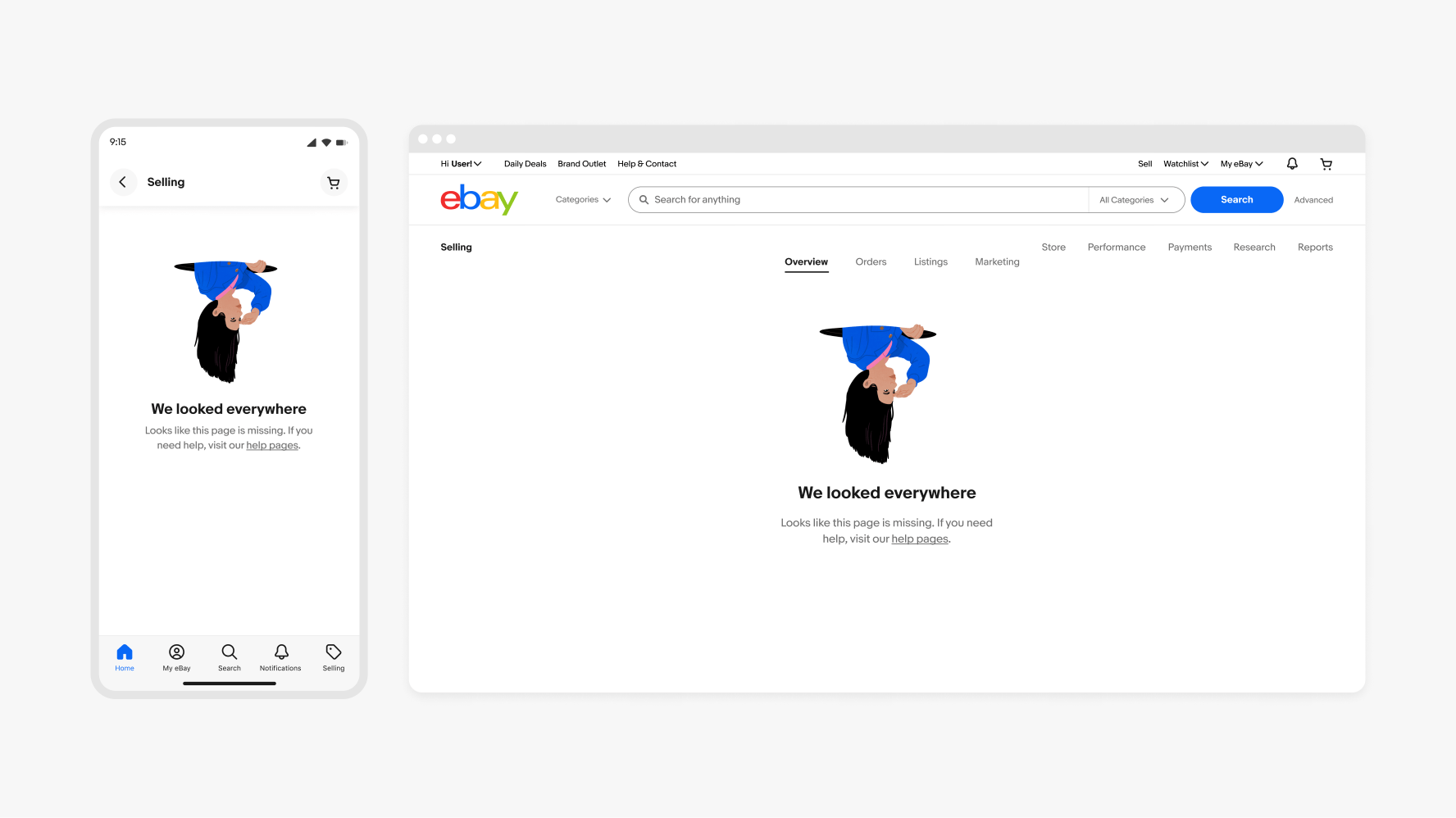
When no illustration applies
If no illustration has been created for your specific product area, you can always use an icon instead. Make sure to use the 64px by 64px icon size—do not enlarge smaller icons in this context.
